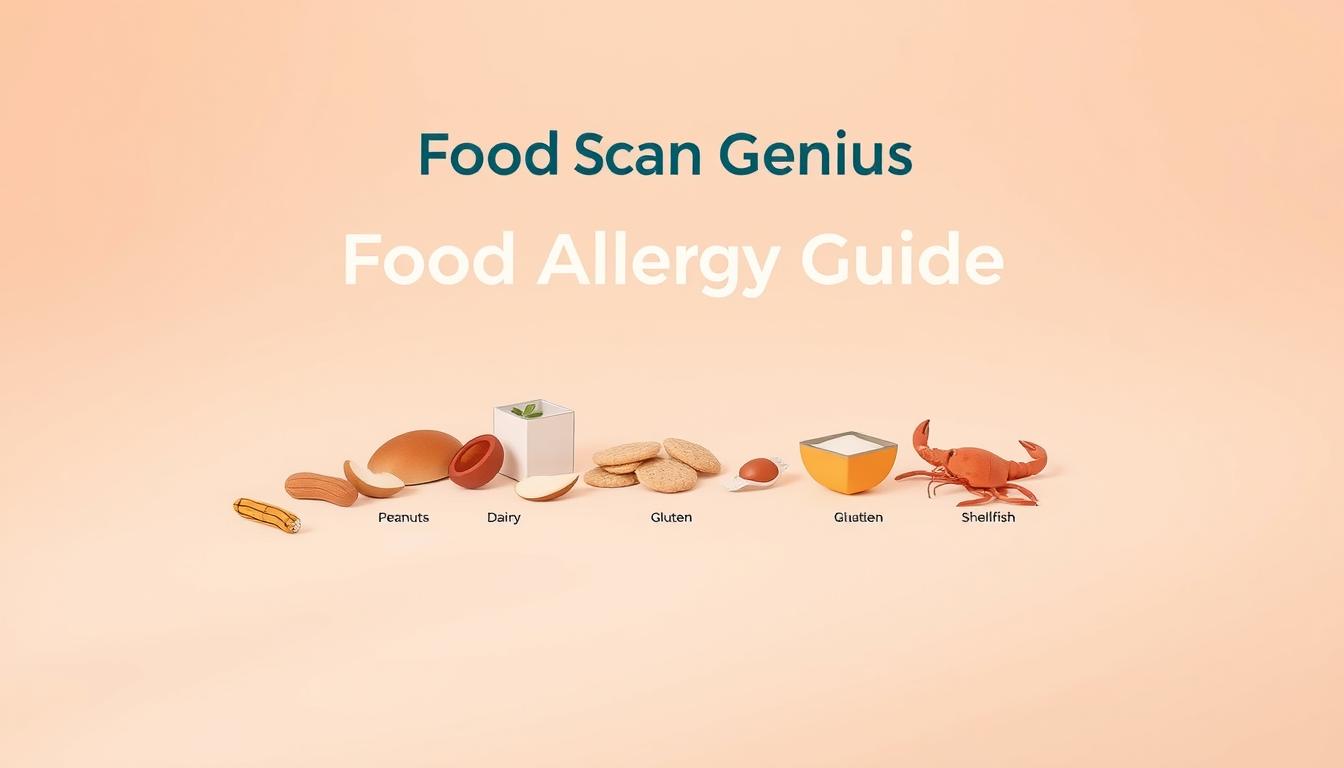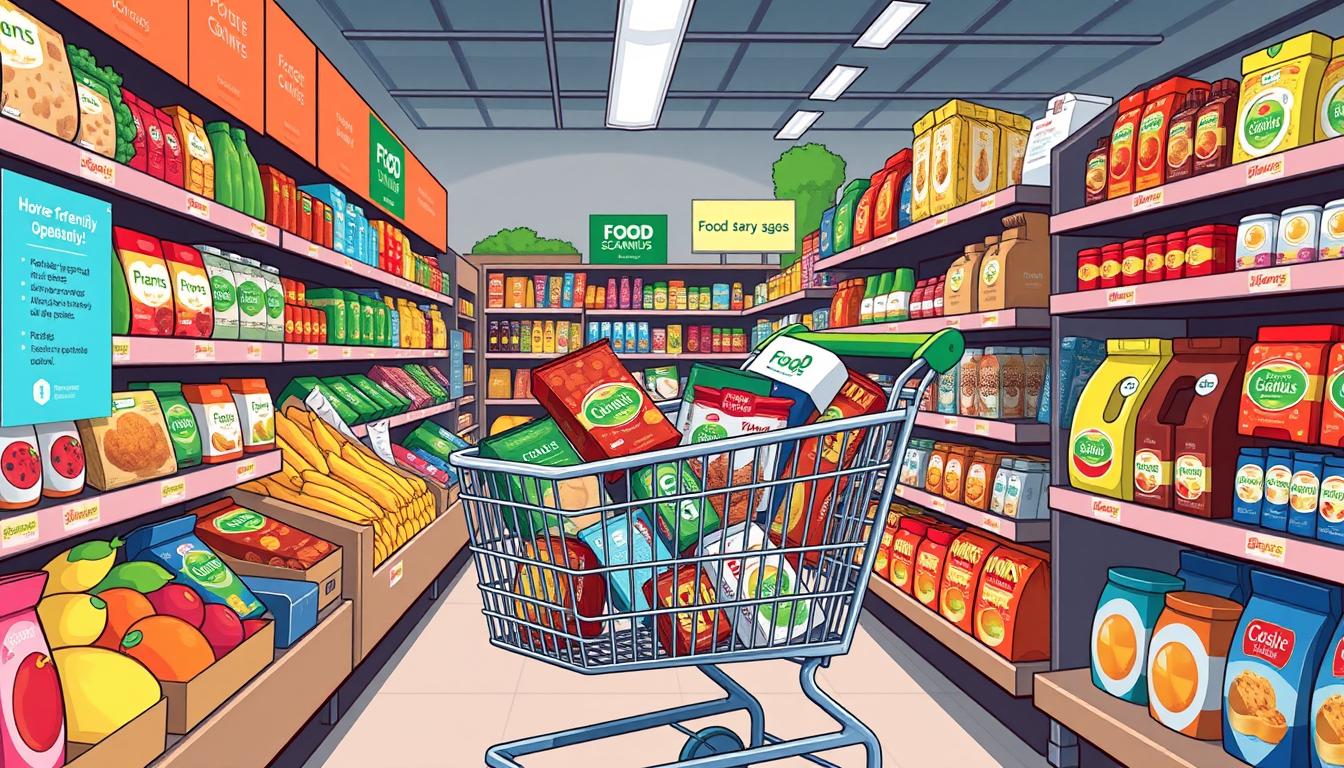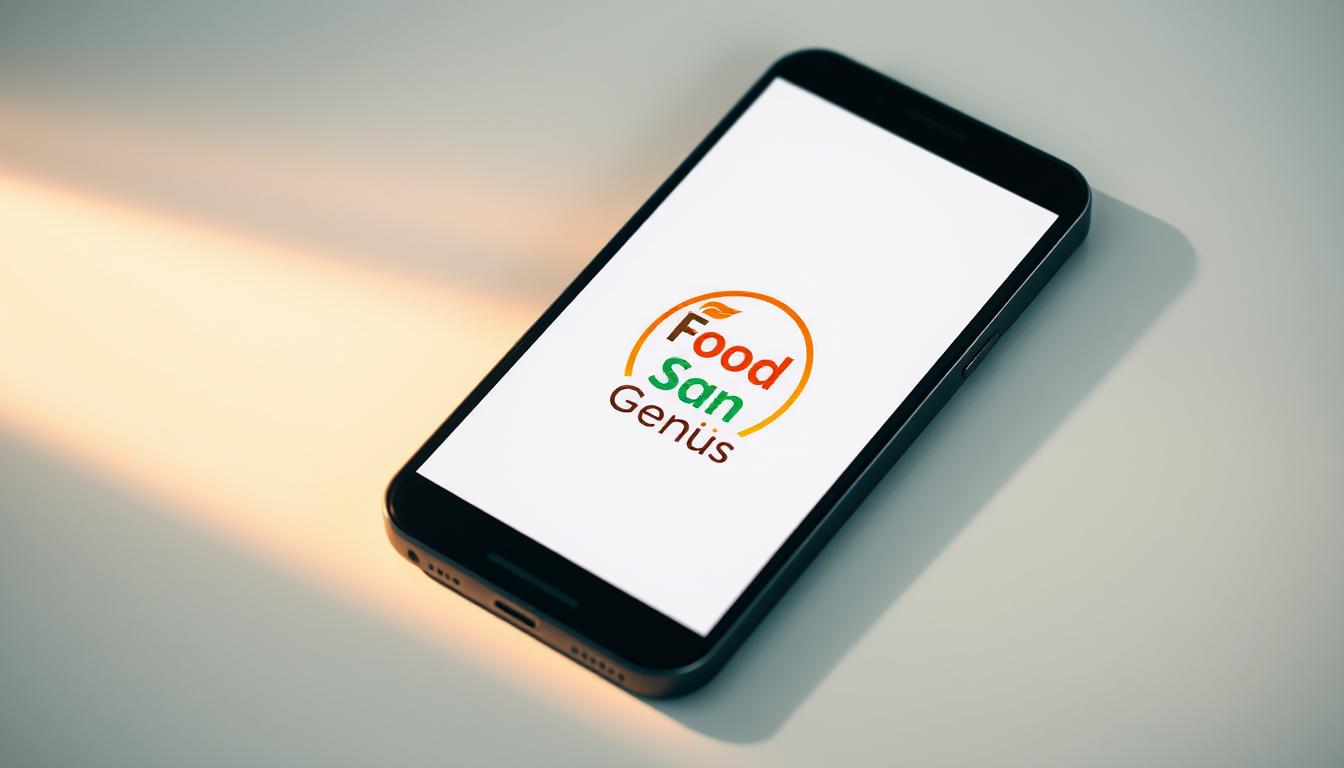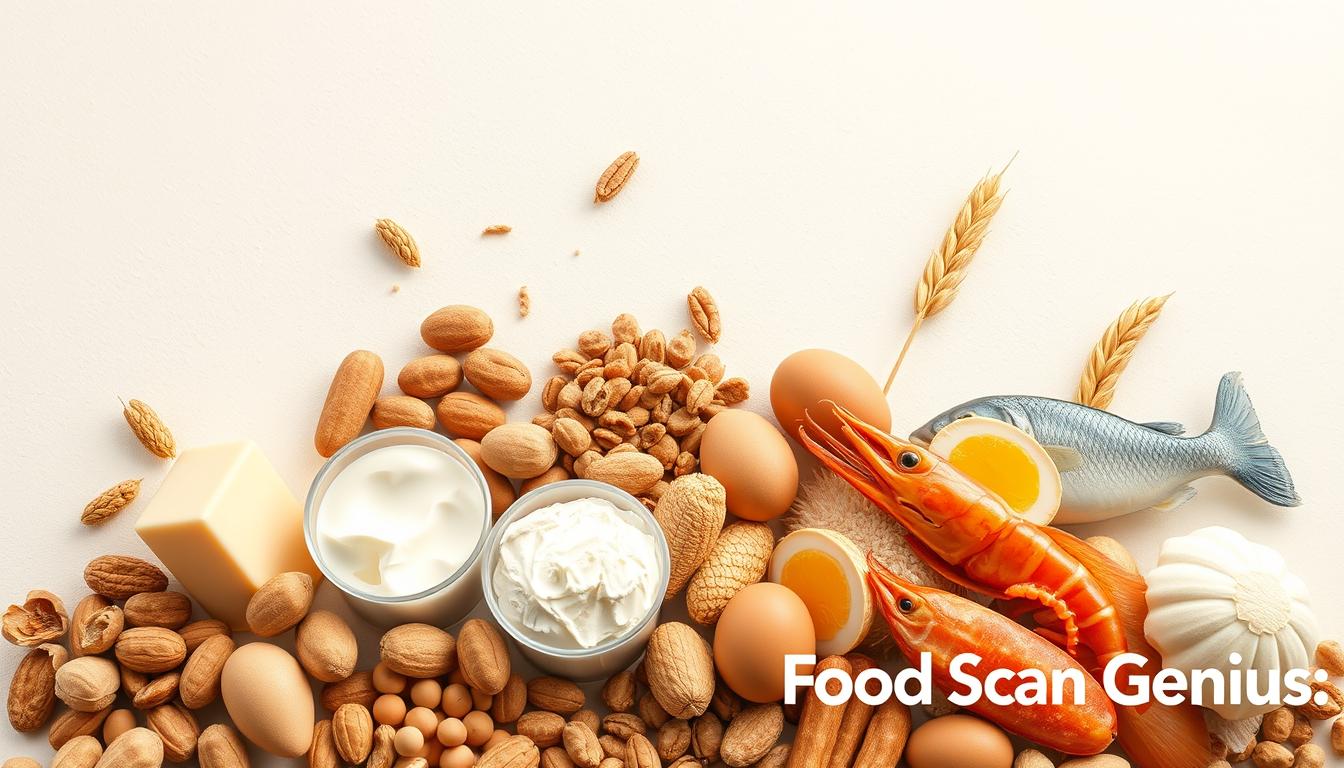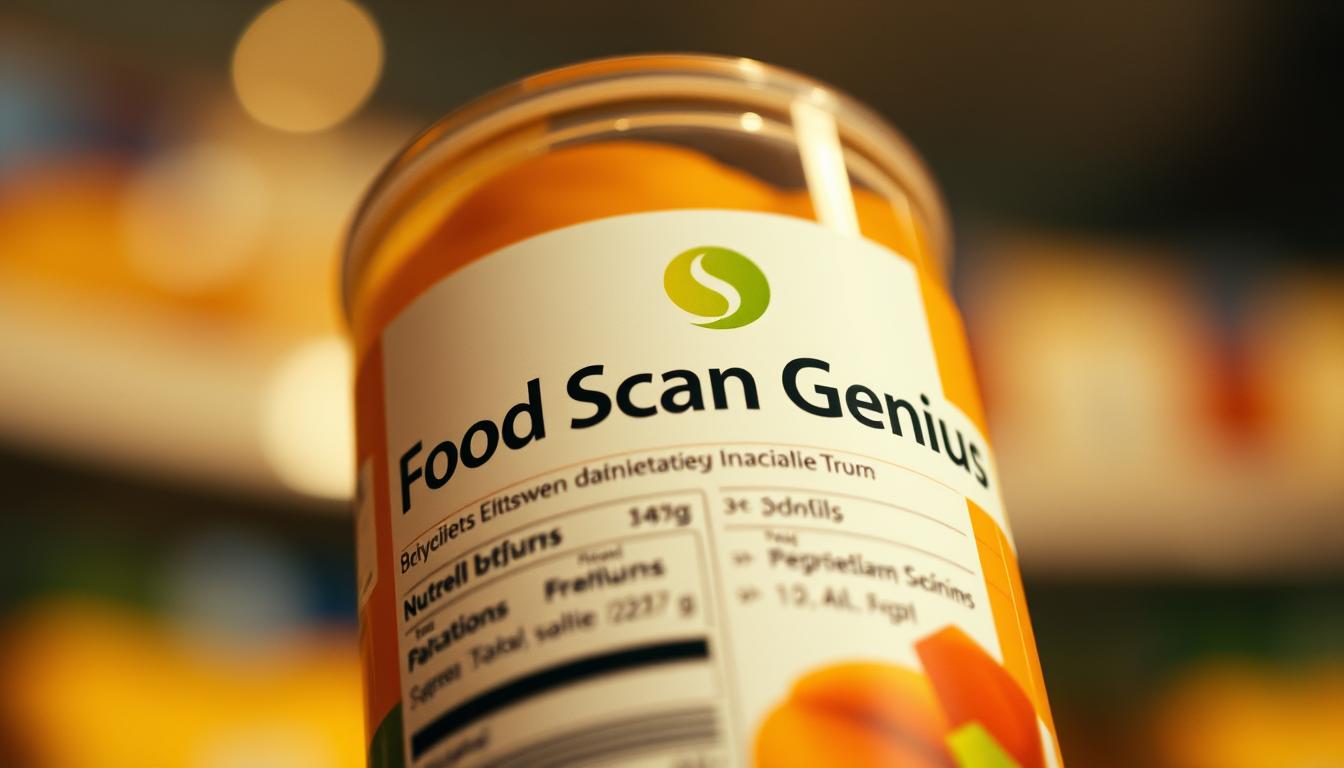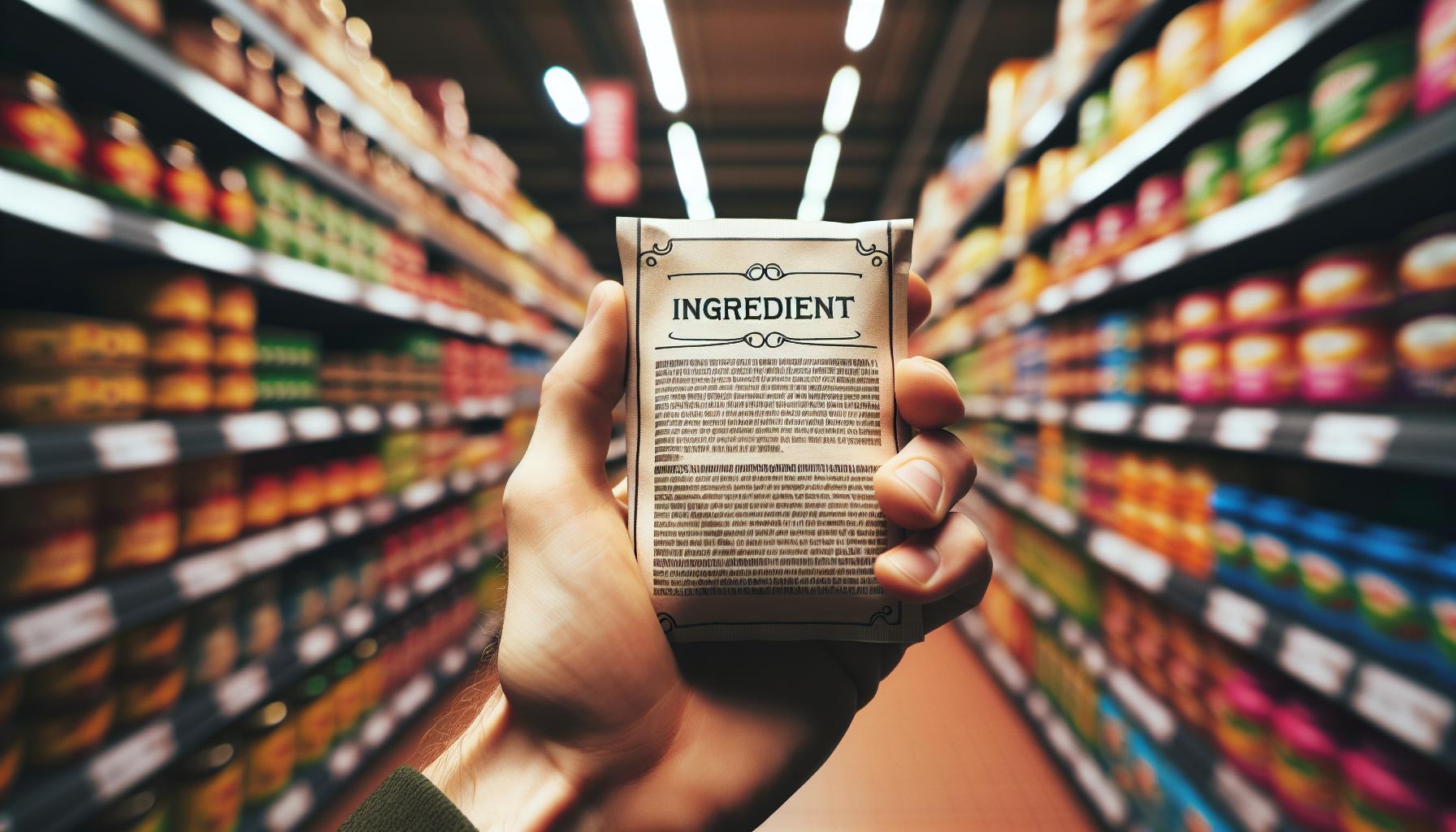Top allergens in packaged foods revealed! Get the Food scan Genius app for iOS & Android to shop safely. Your AI assistant for food allergies! 🎯 https://food.scangeni.us
Discover Gluten-Free Products Easily with This Scanner
Find safe food options instantly with our gluten-free scanner app. Scan barcodes, check ingredients, and discover trusted products while shopping. Perfect for celiac and gluten-sensitive individuals
Reading Food Packaging for Allergens Made Easy – Food Scan Genius
Reading food packaging for allergens made easy with Food Scan Genius. Your AI shopping assistant—download now on iOS & Android!
Tips for Managing Food Allergies: Food Scan Genius App Guide
Discover tips for managing food allergies with Food Scan Genius—your AI shopping assistant. Download now on iOS & Android!
Top 10 Common Food Allergens to Avoid | Food Scan Genius
Learn about the top 10 common food allergens to avoid and download the Food Scan Genius app for a smarter shopping experience. Available on iOS and Android!
Reading Ingredient Labels for Food Allergies While Shopping
Learn how to read ingredient labels for food allergies while shopping with our expert guide. Download Food Scan Genius app for iOS & Android today! 📱 https://food.scangeni.us
The app that people with Food Allergies have been waiting for!
Living with a food allergy can be tough. It’s about checking labels and worrying about cross-contact. But, you’re not alone! We’re here to help you navigate allergens with confidence. Our guide is here to make things easier. The FDA’s strict labeling rules mean you can trust products. But, we know it’s more than just labels—it’s about feeling safe. Introducing the Food Scan Genius app, your AI assistant for dietary needs. It’s on iOS and Android. Scan products, get allergen info, and shop with ease. It’s like having a friend in your pocket! Key Takeaways Our guide simplifies allergen awareness and offers practical tips for everyday life. The FDA enforces strict labeling laws to help you identify allergens in products. The Food Scan Genius app is a must-have tool for managing dietary needs. Allergic reactions can be serious, but proper awareness reduces risks. You’re part of a supportive community that cares about your well-being. Understanding the Importance of Ensuring Safe Food Choices for Allergies Life with dietary restrictions can seem like a maze. But, with the right tools and knowledge, you can make safe choices. Let’s explore why allergen awareness is key and how it empowers you to manage your diet. The Rising Need for Allergen Awareness About 8% of children and 4% of adults in the U.S. have food allergies. This number is growing. Knowing what’s in our food is crucial, especially for common allergens like milk, egg, and wheat. The FDA’s labeling laws help a lot. But, cross-contact can still be a risk. Always read labels carefully and ask questions when eating out. User Intent Behind Allergy-Safe Food Choices People with dietary restrictions want peace of mind. Knowing a product is safe can make a big difference. Here’s what drives their choices: Transparency: Clear labeling avoids guesswork. Safety: Avoiding cross-contact ensures safe meals. Empowerment: Knowing ingredients lets people make confident choices. By staying informed, you can enjoy meals without worry. It’s not just about what you eat—it’s about how you approach your dietary needs. Using the Food Scan Genius App for Allergy-Friendly Shopping Shopping with dietary restrictions just got easier. The Food Scan Genius app makes reading labels simple. It’s perfect for planning meals or quick snacks. This app is your go-to for safe choices. How the AI Assistant Enhances Food Safety Ever wondered if that granola bar is safe for your child? The app’s AI assistant scans product labels in seconds. It flags hidden allergens like peanuts, milk, or soy. It’s like having a personal shopper who knows your dietary needs inside out. Plus, it cross-checks FDA-approved allergen lists, so you can trust the results. Families love how the app simplifies meal planning. One user shared, “It’s a lifesaver for my son with multiple allergies. We can finally enjoy grocery shopping again!” With every step guided by the app, risky exposures are minimized. This even prevents severe reactions like anaphylaxis. Access on iOS and Android Platforms No matter your device, the Food Scan Genius app has you covered. Available on both iOS and Android, it’s designed for seamless use. Just download, set up your profile, and start scanning. The app’s intuitive interface makes it easy for everyone. From tech-savvy teens to busy parents. With features like personalized recommendations and unlimited scans (in the premium version), it’s no wonder 85% of users feel more confident about their food choices. So, why stress over labels when the Food Scan Genius app can do the heavy lifting for you? Navigating FDA Guidelines and Allergen Regulations The FDA plays a crucial role in keeping our meals free from hidden allergens. Their strict rules and inspections help protect consumers from undeclared ingredients like peanuts, tree nuts, and soy. Let’s explore how these regulations work and why they matter. Key Regulatory Actions and Inspections The FDA enforces the Current Good Manufacturing Practice (CGMP) and Preventive Controls (PC) rules to minimize allergen cross-contact. Routine inspections ensure manufacturers follow these guidelines. When violations occur, the FDA takes action—like issuing warning letters or recalling products. For example, in 2023, nearly half of all recalls were due to undeclared allergens. This highlights the importance of strict oversight. By catching issues early, the FDA helps prevent serious reactions to ingredients like tree nuts or peanuts. Accurate Allergen Labeling Clear labeling is a cornerstone of FDA regulations. The Food Allergen Labeling and Consumer Protection Act (FALCPA) requires products to list major allergens like soy, milk, and wheat. This helps consumers make informed decisions about every dish they prepare or consume. Here’s how the FDA ensures accuracy: Routine Inspections: Manufacturers are checked for compliance with labeling laws. Warning Letters: Companies that fail to disclose allergens receive formal warnings. Product Recalls: Items with undeclared allergens are removed from shelves immediately. By following these steps, the FDA reassures consumers that their meals are safe and free from hidden risks. Whether it’s a snack or a full dish, accurate labeling is your best defense against allergens. Practical Tips for Safe Meal Planning and Substitutions Meal planning with dietary restrictions doesn’t have to be stressful—let’s make it simple! With a little creativity and the right strategies, you can enjoy delicious meals without worry. Here’s how to take control of your kitchen and create dishes that work for you. Identifying and Avoiding Common Allergens First, learn about common allergens. Look out for sesame, fish, and wheat. Always check labels for hidden names like “tahini” for sesame or “albumin” for eggs. If unsure, ask or choose products with clear allergen statements. Here’s a quick guide to substitutions: Milk: Try almond, oat, or rice milk for a creamy alternative. Eggs: Use applesauce or mashed bananas in baking. Peanuts: Swap in sunflower or oat butter for a nut-free spread. Fish: Opt for chicken, tofu, or jackfruit in recipes. Managing Your Kitchen for Safety Prevent cross-contamination by organizing your kitchen. Use separate cutting boards and utensils for allergen-free cooking. Label containers clearly and store allergens in a designated area. This saves time and reduces risks. Meal prep is a
Scan Food for Allergens Quickly & Safely
Learn how to scan food for allergens effectively with reliable tools and apps that help identify potentially dangerous ingredients. Stay safe while dining out or grocery shopping
Discover Your Food Allergies with Our Accurate Scanner
Protect your health with our advanced food allergy scanner that instantly detects allergens in meals. Get accurate results and peace of mind when dining at home or restaurants
How To Spot Milk Ingredients To Avoid While Grocery Shopping
Navigating a milk allergy can feel overwhelming, especially when shopping for groceries. With so many products on the shelves, it’s crucial to know what to avoid. This guide will help you identify common milk-derived ingredients, read labels effectively, and make informed choices, ensuring you stay safe while enjoying your favorite foods. Let’s dive in! Table Of Contents Understanding Milk Allergies Common Milk-Derived Ingredients to Avoid How to Read Food Labels for Milk Allergens Supermarket Shopping Tips for Milk Allergy Management Trusted Resources and Tools for Milk Allergy Management Practical Advice for Families Managing Milk Allergies Conclusion Related Posts Frequently Asked Questions (FAQs) Sources Key Takeaways Understanding the difference between a milk allergy and lactose intolerance is crucial for proper management and treatment. Always read food labels carefully, looking for both obvious and hidden milk-derived ingredients to avoid allergic reactions. Familiarize yourself with the Food Allergen Labeling and Consumer Protection Act (FALCPA) to better navigate food packaging and allergen disclosures. Explore safe food alternatives, such as plant-based milk options, to maintain a balanced diet while avoiding milk allergens. Educate and empower children with milk allergies to make safe food choices, fostering independence and confidence in their dietary management. Understanding Milk Allergies What is a Milk Allergy? A milk allergy is a type of food allergy where your immune system reacts negatively to proteins found in milk, most commonly casein and whey. Unlike lactose intolerance, which is a digestive issue, a milk allergy can trigger serious immune responses, including hives, swelling, or even anaphylaxis. It’s one of the most common food allergies, especially in children, though some adults experience it too. If you’re managing a milk allergy, tools like Food Scan Genius can help you identify hidden milk ingredients in products. Their platform simplifies label reading and ensures you avoid risky items while shopping. Symptoms and Diagnosis of Milk Allergies Milk allergy symptoms can vary from mild to severe. Common signs include skin reactions like rashes or hives, stomach issues such as cramps or vomiting, and respiratory problems like wheezing. In severe cases, exposure to milk proteins can lead to anaphylaxis, a life-threatening reaction requiring immediate medical attention. Diagnosing a milk allergy typically involves a combination of medical history, skin prick tests, and blood tests. Your doctor may also recommend an elimination diet to confirm the allergy. For more detailed guidance, check out resources like the Cleveland Clinic’s milk allergy page or Johns Hopkins Medicine. Understanding your symptoms and getting a proper diagnosis is the first step toward managing a milk allergy effectively. With the right tools and knowledge, like those offered by Food Scan Genius, you can confidently navigate your dietary restrictions and make safe choices. Common Milk-Derived Ingredients to Avoid Major Milk Ingredients Found in Products When managing a milk allergy, it’s essential to recognize the obvious culprits. Ingredients like milk, cream, butter, cheese, and yogurt are straightforward to spot. However, milk proteins such as casein and whey are also common in many products, including baked goods, protein powders, and even some candies. To make shopping easier, tools like Food Scan Genius can help you quickly identify these ingredients. Their platform scans product labels and flags milk-derived components, saving you time and stress. For a deeper dive into ingredient transparency, check out this guide to understand what’s really in your food. Hidden Milk Ingredients in Processed Foods Milk-derived ingredients often hide under less obvious names in processed foods. Terms like “lactose,” “caseinate,” “ghee,” and “hydrolyzed whey protein” can indicate the presence of milk. Additionally, processed meats, salad dressings, and even some non-dairy creamers may contain milk derivatives. Reading labels carefully is crucial, but it can be overwhelming. That’s where Food Scan Genius comes in handy. Their database helps you uncover hidden milk ingredients in everyday products, ensuring you avoid accidental exposure. For more tips on identifying hidden allergens, explore this resource. With the right knowledge and tools, you can confidently navigate the supermarket and keep your diet safe. How to Read Food Labels for Milk Allergens Understanding the Food Allergen Labeling and Consumer Protection Act (FALCPA) The Food Allergen Labeling and Consumer Protection Act (FALCPA) is a game-changer for anyone managing food allergies. This law requires manufacturers to clearly label the presence of major allergens, including milk, on packaged foods. If a product contains milk or milk-derived ingredients, it must be listed in plain language, either in the ingredient list or in a “Contains” statement. For example, a product might say “Contains: Milk” or list ingredients like “casein (milk)” to make it clear. This transparency helps you make safer choices while shopping. Tools like Food Scan Genius can further simplify this process by scanning labels and identifying allergens for you. Tips for Identifying Milk Ingredients on Labels Even with FALCPA, milk ingredients can sometimes be tricky to spot. Look out for terms like “whey,” “casein,” “lactose,” and “milk solids.” Some less obvious culprits include “nougat,” “ghee,” and “hydrolyzed protein.” Always double-check labels, especially on processed foods, as recipes can change without notice. To make this easier, consider using Food Scan Genius. Their platform helps you decode complex ingredient lists and flags hidden milk allergens. For additional guidance, explore this resource to deepen your understanding of food allergens. By staying vigilant and using the right tools, you can confidently navigate food labels and avoid milk allergens, ensuring your safety and peace of mind. Supermarket Shopping Tips for Milk Allergy Management Safe Food Alternatives for Milk Allergies Finding safe alternatives is key when managing a milk allergy. Thankfully, there are plenty of options available. Look for plant-based milk like almond, soy, oat, or coconut milk. Vegan butter, cheese, and yogurt are also great substitutes. Many brands now offer dairy-free versions of popular products, making it easier to enjoy your favorite foods without the risk. To simplify your search, Food Scan Genius can help you identify safe alternatives. Their platform scans product labels and highlights options that are free from milk allergens. For more insights, check out this guide on vegan ingredients.

